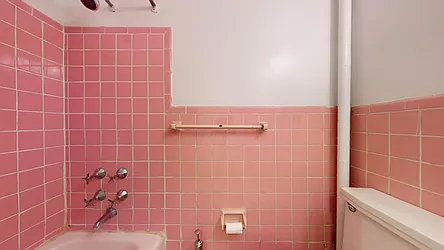Whoa — what’s that smell?
If there is an odor coming from your washing machine that smells like rotten eggs, you’re not alone.
Hundreds of articles, YouTube videos and Pinterest pages are dedicated to the battle against odors being emitted from stinky washing machines. As a matter of fact, washing machine manufacturers have taken up the cause and now offer cleansers specifically marketed to eliminate odors from front-load or top-load washers.
The battle against the washing machine stench has even made it to the courtroom: In November 2014, a federal jury in Cleveland rejected a class action lawsuit alleging that Whirlpool sold front-loading washing machines whose flawed design caused the formation of odoriferous mold. Similar suits have been filed against Bosch and Siemens over its washers.
You can see the struggle is real, and so are the steps you can take to ensure your washing machine causes less of a stink:
Manhattan Rentals Under $2,500 Article continues below
How to Fix the Washing Machine Smell
Soap scum can build up in both top-loading and front-loading machines, but front-loaders are more notorious for causing the smell. Add in the heat and dampness of your washer and this scum makes becomes the perfect breeding ground for stinky mildew, bacteria and mold. To combat the smell:
- Use HE detergent: If you own a front-loader — and you probably do since they are stackable and advantageous for small NYC apartments — use high-efficiency detergent (look for “HE” on the bottle). Normal detergents produce more suds than your front-loader can handle; fewer suds result in less scum for smelly bacteria to cling to.
- Wipe down seal: Remove your laundry soon after the cycle ends. Then, wipe down the rubber seal on the washing machine (photo above) to remove excess water or scum. Also, when the machine is not in use, leave the door open. Even slightly ajar is OK — just enough so moisture can escape.
- Clean your machine: It’s good practice to sanitize your washing machine on the first of each month. If you have a newer model washer, run a “clean washer cycle” with some bleach. If your machine doesn’t have this feature, fill a spray bottle with bleach diluted in water (1:10 ratio). Spray the solution inside the washer drum and let it sit a few minutes before wiping with a sponge. Once you’re done scrubbing, run a regular wash cycle in your machine using a cup of bleach and hot water. Set the machine for the largest size load your machine allows to ensure as much of the inside of the drum is “washed” as possible. If bleach isn’t your thing, you can instead mix one-quarter cup of baking soda with one-quarter cup of water and add this solution to your machine’s detergent container; pour two cups of white vinegar into the drum and run a load using hot water. Whichever method you choose, don’t mix bleach and vinegar as the combination can result in toxic vapors.
How to Fix the Dryer Smell
Especially in small-apartment living, dryers can’t always be located along outside walls, which makes venting difficult. Double-check your set up. As clothes dry, moisture is being removed and vented out of the dryer. If your dryer isn’t vented through an airtight hose all the way to the exterior of the building, you’re pumping warm, moist air directly into your home. This is a perfect recipe for creating mold growth and musty smells, as well as potentially doing some structural damage. That air also carries with it a lot of fine lint particles, which isn’t good to breathe.
If your dryer isn’t properly vented and can’t be moved to a location where outside venting is possible, consider purchasing a ventless clothes dryer. These machines do not have an output air vent and rely on other methods to dispel the moisture laden air. Two types of ventless dryers are available:
- A condensation dryer uses a blower to move air inside the machine. This air is heated and passed through the clothes, but instead of being vented out, the air travels back through a heat exchanger. The heat exchanger cools the air, causing the moisture in it to condense and flow into the washer drainpipe or containment chamber. As the air is dried, it is reheated and passed through the clothes again and again, until the laundry is dry.
- A heat pump dryer sends air through a heat pump to condense water vapor, which flows into a drain pipe or collection chamber. This air is then reheated to be used again on clothes. Heat pump dryers use approximately half the energy required by either condensation or traditional dryers.






















